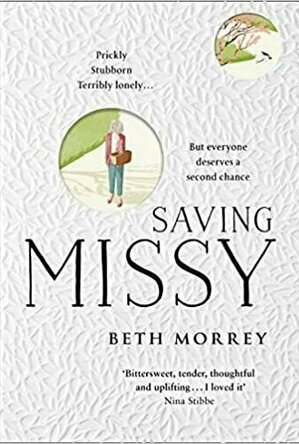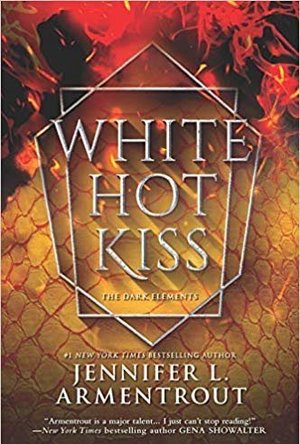
zapptales - WhatsApp Chat Book
Book
App
With zapptales you can print your favourite WhatsApp Chat as a book. Easy, safe and unique! Because...

Real Estate News | Real Estate Investing | Stock Market Investing | Passive Income | Flipping | 1031 Exchange | Private Lendi
Podcast
Don’t get caught off guard by market crashes that can take all your money down with them. And...

The War of the Worlds by H. G. Wells
Podcast
Extraterrestrial invasion, the earth taken over by omniscient intelligences from Mars, the whole of...
TravelersWife4Life (31 KP) rated What Momma Left Behind in Books
Feb 24, 2021
A new to me author Cindy K. Sproles created a vivid view of life on the Appalachian Mountains. Her descriptions of the scenery, the mountains, and the geographical location of the characters were very engaging and interesting to read. I enjoyed Cindy K. Sproles's way of engaging my imagination with the world she created for her characters, it reminded me of Pepper D. Basham and Joanne Bischof’s style of writing. I truly loved the environment she created and was sorry to see the story come to an end.
The plot was very unexpected for me. Whether due to the synopsis not doing the story justice, or my preconceptions going into the book. Either way, it was a surprising storyline that turned out to be a sweet and encouraging read on how to find your place in this world, and where you should place your trust.
Favorite Quote:
“The mountain air brings newness, seeps down deep, and cleans out the things that weigh heavy on a body’s soul. Despite how hard things are, it’s like the mountain is forgivin’. It demands a man’s hard work to survive, but then it wraps its soul and spirit around you, claimin’ you as its own child.”
The characters in this story were interesting and relatable. I enjoyed getting to read about Worie Dressar and loved seeing her growth progress throughout the story, I thought she was a unique character and I enjoyed her journey. Throughout the story, she overcomes much sorrow and pain, mixed in with some truly joyful moments. Worie learns who God wants her to be and the plans that He has for her and her family. The other secondary characters added some much-needed layers to this story, they were interesting, and I would love to read more about their personal stories as well (Hint, hint). Worie Dressar has some very thought-provoking thoughts in this book, and I have written down many of them as reminders for when I need God’s guidance in something. A good book overall.
I give this book 4 out of 5 stars for the deep thought-provoking lessons, the vivid descriptions of mountain hardships, and the moral of trusting God through it all. The only thing I would have like to see more of would have been a better developed secondary character for Worie Dressar.
*I volunteered to read this book in return for my honest feedback. The thoughts and opinions expressed within are my own.
Laura Doe (1350 KP) rated Saving Missy in Books
Mar 12, 2021
I began the book by not particularly liking the main character – Millicent or Missy for short. But throughout the book I grew to love her, all of he, including her imperfections.
She starts off by being the lonely old woman who’s family have all left her that I’m sure we all dread to become. Through a chance meeting she meets Sylvie who becomes such a massive part of Missy’s life and in turn introduces her to the brash Angela and her adorable son Otis. To begin with, it seemed like Angela wasn’t interested in a friendship with Missy but more to take advantage of this poor, lonely old woman. But half way through the book it becomes evident that Angela really has come to love Missy and wants to spend time with her.
Through Angela, Missy inadvertently becomes a dog owner when she’s asked to do her a favour. Missy had no interest in looking after a dog, but something happens that convinces her to try it. Because of this, she opens herself up to a whole world of new friends – the dog walkers in her local park. A whole host of characters that make you feel all warm inside with how much they care about Missy.
Although most stories that are told with a little, old lady as the main character wouldn’t focus on any imperfections, this book explores them and we frequently flashback to situations and conversations which do not paint Missy in the best light. There is one situation that is referred to multiple times in the first half of the book, but it’s not until much later on that we discover what exactly happened. We also see Missy trying to apologise to certain people for some of her faults, through writing letters to the people she now realises she should have been more supportive of or more loving towards.
We also learn a lot about Missy’s marriage to her husband, Leo. This was obviously not a perfect marriage, as most aren’t, but it also sometimes made me feel that Leo didn’t really care about her as much as she cared about him. It’s only when she finds a letter from him hidden in a book that it shows how much he really has cared about her all those years and admits his own imperfections.
Thank you Pigeonhole and Beth Morrey for letting me read and review this, and I will definitely be investing in a hard copy to read again!
Leanne Crabtree (480 KP) rated White Hot Kiss in Books
Jan 6, 2021
This will be my third book by the author, fourth if we class her writing as J. Lynn, and I've liked all of them so the chance to read anything by her is a big YES PLEASE!
After reading both this and Covenant, I've noticed that she likes to write love triangles into her stories. I don't have a problem with them and gladly cheer on for whichever guy I want the heroine to be with. In this I was Team Roth from early on. Zayne might have been the guy Layla'd been dreaming of for years but he never really seemed to want her in that way (or he was just very good at hiding it) and treated her a lot like a close friend or little sister. Roth on the other hand always seemed to be there when she needed him and he teased and flirted and could kick arse, being what he was: Upper Level Demon.
I feel I have to mention Bambi, too. She was cool! Who wouldn't her watching over you?
I also feel like I have to mention Petr. I'm glad about what happened to him, he wasn't a nice guy so he deserved everything he got.
As for the story, I get Layla's feelings of not really belonging to either side. Being born half demon and half warden, Layla struggles in her attempts to fit in with the people--Warden's--who've raised her. Half the Warden's don't like her presence and want her gone while the other half treat her like family. As for being half demon, she's been tagging them for the past God knows how many years and feels more of a Warden and keeps being told she's a Warden. But as the story progresses, she begins to question everything she's ever known and the people around her.
The more I read of the book, the more I fell in love with Roth. He was amazing and just for that last 10% or so this is getting five stars from me. I cried; tears silently falling down my cheeks more or less continuously for the time it took me to finish the story. Crikey!
I need to read the next in the series to figure out what happens next with these guys.
If you're a fan of the author then this shouldn't be missed. If you haven't read anything by Jennifer L. Armentrout and like YA paranormal romances then you should really pick up one of her books, they're really good.
Ivana A. | Diary of Difference (1171 KP) rated Sisters in Books
Oct 5, 2020
Synopsis:
Is blood really thicker than water?
Abby and Ellie were never close as children. Now in their thirties, they each harbour deep-rooted resentment for the other - Abby for her sister's looks and her status as their mother's favourite. Ellie meanwhile is envious of Abby's perfect husband and picturesque home, a villa on the sun-soaked Italian island of Elba.
When Abby invites Ellie to stay, both sisters see the break as a chance to relax and put aside their differences. But with their mother Susanna there too, all the simmering tensions of the past quickly rise to the surface. And Ellie suspects that Abby and their mother are keeping a dangerous secret . . .
But after a shocking act, the sisters have only each other to rely on. Vulnerable and scared, trusting each other will be the biggest risk of all . . .
My Thoughts:
Sisters by Michelle Frances was a very enjoyable and exciting ride for me. Not having read her previous books, I started reading without any expectations, hoping to enjoy the story for what it was. Two sisters - trying to improve their relationship, hopefully without their mother interfering.
What I got instead, was so much more! The suspense keeps building up from the very first chapter. The tension between the sisters is really awkward. The relationships between the mother and both daughters is very different and very concerning.
And then everything changes.
We have a surprising plot twists, and from that moment on, we are on a wild adventure. Old secrets will start coming up, things people thought were forgotten in the past. I did not know, and couldn't guess who the real villain is until the very end, and that was quite enjoyable for me! Everyone will tell you stories, everyone will say their own point of view. To you, everyone will seem like a villain and a victim at the same time, and this uncertainty will make you keep turning pages until you find out. Until the end.
I am glad I read Sisters by Michelle Frances. Another amazing suspense now added to my list. I highly recommend it to mystery, thriller and suspense fans, especially the ones that enjoy family drama.

The Week: #1 UK news & current affairs magazine
News and Magazines & Newspapers
App
The Week magazine – for curious minds who want an intelligent and independent view of the...

Buzz Books 2018: Young Adult Fall/Winter: Exclusive Excerpts from Forthcoming Titles by Rebecca Hanover, Julie Kagawa, Kody Keplinger, Natasha Ngan, Courtney Summers and More
Book
Our ninth Buzz Books: Young Adult gives readers the special excitement of being among the first to...
Debbiereadsbook (1617 KP) rated Christmas Mountain in Books
Nov 18, 2021
Ok So!
I'm not usually one for Christmas books, I'm really not, but something about the blurb pulled at me, and O>M>G I'm so freaking glad it did!
Rami and Fen work together in HMP Manchester. There is much flirting and then Fen makes a move. But life gets in the way and 18months later, Rami is driving up the mountain to see his sister with his 2-year-old nephew in the car. In a snow storm. Ill-prepared. And his car wrecks. And the Good Lord above sees fits to send an angel by the name of Fen to rescue him and Charlie who goes by the name of Fen.
What this is, right, is a beautifully written second chance at love story, it really is. I read it in one sitting and its 200 odd pages long.
Both Fen and Rami are smitten with each other, and they dance around each other for some time before life gets in the way and things happen and then Fen is gone. Rami never did know why. But finding him on his sister's mountain, is a gift sent at just the right time of year. The problem is, both Fen and Rami are carrying a huge amount of emotional and physical baggage.
It takes time for both men to fully get their stories out, and I really did like being made to wait for the full pictures to become clear. I don't like for everything to be thrown at me in one go.
I also loved being made to wait for Fen and Rami to finally, FINALLY have their moment, you know? I mean its full of emotions and steamy bits, but that's all they are for a long time: bits. But once they commit to each other, their relationship and being together, the steam level doesn't rack up too much, it just takes a slide into something more. Something deeper for these two.
I loved the connection to Rami and his sister, that Fen had and they didn't know. I LOVED the sister and her family!
I loved this book, I really did. I could rant and rave and go on and on and on and on andonandonandonandon.....but I won't cos spoilers do not a good review make.
So! For a Christmas book, with the L word bandied about quite early (something else I'm not a fan of!) I'm a big fan of this book!
5 full and shiny stars
same worded review will appear elsewhere




